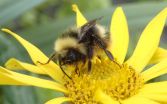(Press-News.org) Using Twitter and Google search trend data in the wake of the very limited U.S. Ebola outbreak of October 2014, a team of researchers from Arizona State University, Purdue University and Oregon State University have found that news media is extraordinarily effective in creating public panic.
Because only five people were ultimately infected yet Ebola dominated the U.S. media in the weeks after the first imported case, the researchers set out to determine mass media's impact on people's behavior on social media.
"Social media data have been suggested as a way to track the spread of a disease in a population, but there is a problem that in an emerging outbreak people also use social media to express concern about the situation," explains study team leader Sherry Towers of ASU's Simon A. Levin Mathematical, Computational and Modeling Sciences Center. "It is hard to separate the two effects in a real outbreak situation."
In the case of the Ebola outbreak in the U.S., the team was confident that the Ebola-related social media data were due only to public concern or interest in the outbreak, and thus it was an unprecedented opportunity to study how news media may sow panic in a population.
The team collected data on millions of U.S. Ebola-related Google searches and tweets in October, related to phrases like "Ebola symptoms" and "Do I have Ebola?"
ASU mathematical epidemiologist Carlos Castillo-Chavez of the School of Human Evolution and Social Change in the College of Liberal Arts and Sciences says, "When we compared the temporal patterns in these data to the patterns in the number of Ebola-related news stories that ran on major news networks, we found that the peaks and valleys in both almost exactly matched. We were amazed at how incredibly similar the temporal patterns were."
The team fit a mathematical contagion model for the spread of disease to the data and was able to show that the trends in the news media stories explained nearly all of the variation in the social media. News videos were highly effective at inciting public concern.
Each news clip inspired tens of thousands of Ebola-related tweets and Internet searches. In addition, the analysis noted a "boredom" effect, where after a few weeks Ebola-related news stories became less and less able to inspire people to perform Ebola-related Google searches or tweets.
"Mass Media and the Contagion of Fear: The Case of Ebola in America," which describes the study and presents the team's findings, appears in the June 11 edition of PLoS One.
Towers states that this study will be useful in future outbreak situations because it provides valuable insight into just how strongly news media can manipulate public emotions on a topic.
INFORMATION:
National Science Foundation Extreme Science and Engineering Discovery Environment (NSF XSEDE) high-performance computing initiative for education allocation #DMS140043, U. S. Department of Homeland Security (DHS) VACCINE Center award #2009-ST-061-CI0001-06, National Institute of General Medical Sciences (NIGMS) at the National Institutes of Health grant #1R01GM100471-01, the Western Alliance to Expand Student Opportunities (WAESO) Louis Stokes Alliance for Minority Participation (LSAMP) Bridge to the Doctorate (BD) National Science Foundation (NSF) "Multidisciplinary STEM Solutions LSAMP Bridge to the Doctorate" Grant #HRD-1401190
Vitamin D plays an important part in the human immune response and deficiency can leave individuals less able to fight infections like HIV-1. Now an international team of researchers has found that high-dose vitamin D supplementation can reverse the deficiency and also improve immune response.
"Vitamin D may be a simple, cost-effective intervention, particularly in resource-poor settings, to reduce HIV-1 risk and disease progression," the researchers report in today's (June 15) online issue of Proceedings of the National Academy of Sciences.
The researchers looked at ...
MAYWOOD, IL - Poverty is known to be a strong risk factor for end-stage kidney disease. Now, a first of-its-kind study has found that the association between poverty and kidney disease changes over time.
The percentage of adults beginning kidney dialysis who lived in zip codes with high poverty rates increased from 27.4 percent during the 1995-2004 time period to 34 percent in 2005-2010.
The study, by corresponding author Holly Kramer, MD, MPH and colleagues at Loyola University Chicago Stritch School of Medicine, is published in the journal Hemodialysis International.
Researchers ...
For the last decade, astronomers have observed curious "hotspots" on Saturn's poles. In 2008, NASA's Cassini spacecraft beamed back close-up images of these hotspots, revealing them to be immense cyclones, each as wide as the Earth. Scientists estimate that Saturn's cyclones may whip up 300 mph winds, and likely have been churning for years.
While cyclones on Earth are fueled by the heat and moisture of the oceans, no such bodies of water exist on Saturn. What, then, could be causing such powerful, long-lasting storms?
In a paper published today in the journal Nature ...
New research by NOAA, University of Alaska, and Woods Hole Oceanographic Institution in the journal Oceanography shows that surface waters of the Chukchi and Beaufort seas could reach levels of acidity that threaten the ability of animals to build and maintain their shells by 2030, with the Bering Sea reaching this level of acidity by 2044.
"Our research shows that within 15 years, the chemistry of these waters may no longer be saturated with enough calcium carbonate for a number of animals from tiny sea snails to Alaska King crabs to construct and maintain their shells ...
AUSTIN, Texas -- Researchers in the Cockrell School of Engineering at The University of Texas at Austin have developed a groundbreaking new energy-absorbing structure to better withstand blunt and ballistic impact. The technology, called negative stiffness (NS) honeycombs, can be integrated into car bumpers, military and athletic helmets and other protective hardware.
The technology could have major implications for the design and production of future vehicles and military gear to improve safety.
The new NS honeycomb structures are able to provide repeated protection ...
ALEXANDRIA VA, JUNE 15, 2015 - A statistical analysis of poll performance in battleground states over the last three presidential elections shows polling firms produced estimates that were fairly accurate in 2004 and 2008, but underestimated support for President Obama in 2012, a new article reports.
The article's authors--Ole J. Forsberg and Mark E. Payton, professors in the department of statistics at Oklahoma State University--believe the culprit for bad polling in the 2012 election may have roots in "outdated and possibly flawed sampling methodology" that resulted ...
SAN FRANCISCO--For many generations, Bedouin people living in the Abu Dabbab area on the Egyptian Red Sea coast have heard distinct noises--like the rumbling of a quarry blast or cannon shot--accompanying small earthquakes in the region. Now, a new study published in the Bulletin of the Seismological Society of America offers an explanation for this uniquely noisy seismic event.
Seismic activity in the area of the Egyptian seaside resort Abu Dabbab may be caused by an active fault that lays below a 10-kilometer thick block of old, now rigid igneous rock. The surface of ...
(Philadelphia, PA) - It's long been known that scratching evokes a rewarding and pleasurable sensation in patients with chronic itch. Now, researchers in the Department of Dermatology and Temple Itch Center at Temple University School of Medicine (TUSM) may be closer to understanding why.
Using advanced fMRI imaging, the researchers looked at activity in the brain while 10 chronic itch patients and 10 healthy subjects scratched an itch. They found that areas of the brain involved in motor control and reward processing were more activated in chronic itch patients while ...
There is little information about bee populations in Alaska, where native bee pollination is critical to the maintenance of subarctic ecosystems. A team from the University of Alaska Fairbanks and the USDA have now completed a two-year study on bumble bees in agricultural areas in the region. The research was published in the Biodiversity Data Journal.
Pollination is one of the most fundamental processes sustaining agricultural production and natural ecosystems. While decrease in bee populations is a common concern, most press coverage has been directed towards Colony ...
Recent genomic research has prompted a petition that calls for the reclassification of African elephants from one threatened species to two endangered species to protect both from imminent extinction.
The U.S. Fish and Wildlife Service (FSW) has 90 days to respond to a petition from the Center for Biological Diversity at http://www.biologicaldiversity.org, a public interest environmental organization dedicated to the protection of native species and their habitats. The Center requests that the FWS recognize the forest elephant (Loxodonta cyclotis) and savannah elephant ...


